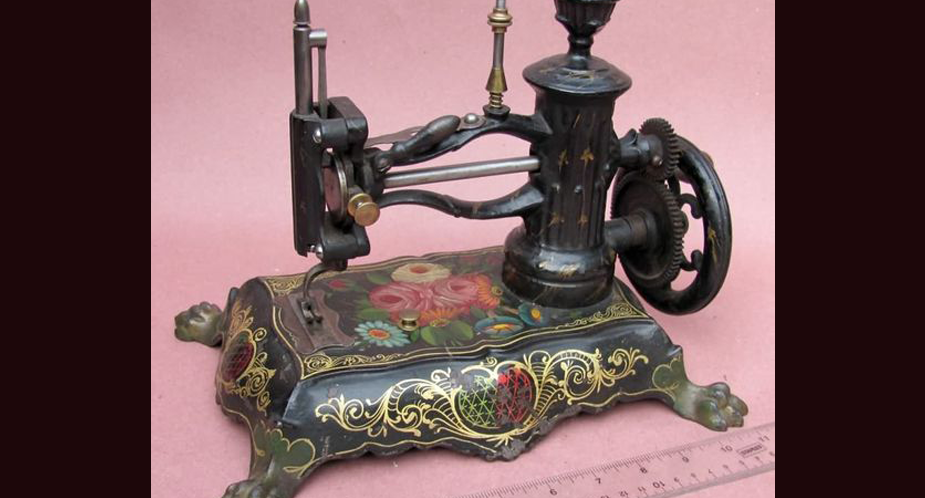.. the sewing machine! Early versions had been around since the early 1800’s, but they were models you had to stand up to use. They were huge, dangerous things used to punch through layers of heavy wools and other industrial applications. It took awhile for inventors to “pull them back” for use on small and light fabrics.
In 1861, Singer sold the first small light models that could sew a single piece of fabric. Designed specifically for individual and home use, Singer also invented the first chain stores to reach the homemaker.
Having a home sewing machine meant 2 things:
- Anything after 1861 could be made by machine – but no backstitching and no zigzag!
- Women could make their own clothing.
Representation that women of history sat by the fire sewing all day is incorrect. Until the Singer home sewing machine, most women knew how to repair and sew or do fancy work and did if if they had to, it was a rare few who chose it or did it as a profession. It was much more typical until the 1880’s when women went to the city for sewing jobs in factories to have tailors and seamstresses create, build, and alter clothing.
There was a complex industry with sale of used clothing, guilds, and later mass production through history. (see the history pages on the website)
(Photo: Singer introduced the home sewing machine, but there were many other successful manufacturers who followed their lead like this hand turned Shaw mid-1860’s model)

